Portrait of an American Election
"Election Day" isn't a film that highlights the horse-race aspect of American politics, nor is it about red or blue states. Instead, director Katy Chevigny and her colleagues from Arts Engine Inc. aimed to capture a much more complex story -- or rather, a multilayered and interconnecting set of stories -- about an array of Americans from different states, backgrounds and political positions, all taking part in some way in the 2004 U.S. presidential election.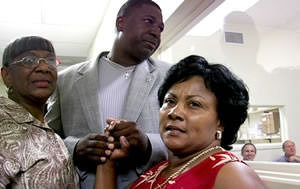
“Election Day” isn’t a film that highlights the horse-race aspect of American politics, nor is it about red or blue states. Instead, director Katy Chevigny and her colleagues from Arts Engine Inc. aimed to capture a much more complex story — or rather, a multilayered and interconnecting set of stories — about an array of Americans from different states, backgrounds and political positions, all taking part in some way in the 2004 presidential election.
Orchestrating the shoot was no small feat: Chevigny and her team sent out 14 crews around the country to gather footage from dawn until midnight on Nov. 2, 2004. The end result, pulled together from over 100 hours of footage, is an unpredictable and engrossing documentary that offers inspiration and caution in equal doses. This kind of story can serve as a timely call for election reform — that is, if both voters and politicians can learn from what didn’t work at the polls in 2000 and 2004 and build on what did. PBS is helping out by screening “Election Day” as part of its “P.O.V.” series Tuesday (July 1), giving voting viewers plenty of time to prepare for this year’s trip to the polls.
On the eve of the documentary’s debut on PBS, Chevigny took a moment to talk to Truthdig’s Kasia Anderson about “Election Day,” as well as about online activism, Arts Engine projects in the works, and the Media That Matters Film Festival.
Kasia Anderson: So, “Election Day” is definitely in keeping with stories we’ve run with a kind of cautionary tone about some of the shenanigans and difficulties people can encounter when it comes to engaging in the political process. Can you, just for a little background, talk about how you came to making the film and some of the things you saw when you sent your crews around the country to different communities and their different experiences about voting?
Katy Chevigny: Sure. The idea behind the film came out of our wondering how voters would be approaching the polls in the aftermath of the 2000 election. There had been so much controversy over vote-counting in particular. And so we were asking ourselves in the summer of 2004: Are voters going to be approaching this election with a different feeling — either trepidation or determination or disgust and outrage — what are we going to see? And so, we thought, one way to make a film like that would be to actually make an observational documentary about the experience of regular Americans who are going to the polls or working at the polls. It’s not about the campaign; it’s just about what it’s like for people who are regular Americans, as they say.
So we dispatched 14 different crews to different parts of the country who all followed one character, one person or one location from dawn until midnight, and part of what we were looking for … I mean, we didn’t know what we were going to get, right? You don’t know what’s going to happen in front of the camera. But we were hoping to show both some commonalities and some contrasts in the experience of voters going to the polls. And we certainly found that.
Anderson: Did you have any criteria for what types of people you wanted to follow, or was it, go to these types of communities and see who was willing to be followed?
Chevigny: Oh no, we had … we did some very specific almost “casting” of the different characters in advance. And one of the things we were looking for were stories that aren’t necessarily covered much in the mainstream media, as well as things that played against stereotypes. One of the things that we were trying to fight against is just this way that the mainstream media puts everybody into a camp — a blue state or a red state — and you know, a state just goes all red, like in Texas, when the networks do that graphic on the air, and what about all those other people in Texas, and what are they feeling about going to the polls? And what’s the nuance behind that story of that state going red or blue?
So, for example, we had somebody working in Chicago looking at different story leads for us, and they said, “There’s a Republican poll worker here who’s trying to make sure that Republicans’ votes don’t get stolen by the Democrats.” And I said, “Well, that’s not every day we hear a Republican underdog story — let’s cover that!” And then we heard from somebody else in Pine Ridge Reservation in South Dakota — in 2000, there was a lot of harassment and problems for Native Americans going to the polls there [where] they have to travel vast distances. And so we did a bunch of research until we found somebody who we thought was interesting and was interested in being part of the film. So, we did that process 14 times over.
Anderson: What are some of the things that you discovered in this last round of elections that you think might still impact voters in 2008?
Chevigny: Well, you know, when we made the film in 2004, we thought we might be documenting a set of processes that would just be true in that election, but the sad part is that a lot of the problems we saw in 2004 are likely to exist in 2008, because there actually hasn’t been substantial reform, certainly at the national level, since then. And a lot of the problems, they’re always there, but they become particularly apparent to the average American and to the press when there’s high voter turnout or when an election is close. And we can assume it’s going to be close in some states, and we know there’s going to be high voter turnout. And there haven’t been really new plans put in place nationwide to ensure that there is better training of poll workers, better resources for polling machines, you know, any of the things that would improve the circumstance[s] for people going to the polls. Anderson: Do you think that the fact that it’s such a high-energy, high-attention race at this point — do you think that might help the chances of keeping any kind of potential fraud or difficulties in check — the fact that the whole world will be watching, in a sense?
Chevigny: Right, I mean, you hope so. I think the watching does help. In “Election Day” we film an international monitor from Australia who’s watching a bunch of polling places in St. Louis, and she actually sees some really egregious disparities in access. And one of the things she says is that she thinks that part of the reason why it’s good to have lots of eyes on the process is that it helps the voter have greater faith in the system to know that other people are watching it.
So, I think that that can be the case, but also the fact that there’s going to be a lot of people there and that the race is going to be so close, there’s going to be a lot of temptation and opportunity for people to manipulate an election that’s manipulatable, and some of them are, some of the voting processes are. But yeah, I’m of the opinion that the more people we have watching and the more scrutiny there is, the harder it is to steal an election, and the more likely people are going to go the extra mile to make sure that the votes are counted properly. So yes, I think it’s helpful.
Anderson: Do you think that a project like yours running on PBS and on the Internet — do you think that that might prime people to be aware, as they’re heading towards November, of their own voting circumstances and how to get around any possible issues … ?
Chevigny: Yes, sure. We were really delighted that PBS’ “P.O.V.” wanted to show it — in particular wanted to show it this summer — and they’re showing it early in the season, they’re showing it July 1. The idea behind that is that allows some time for people who see this film, if they … if the film drives them to the desire to take action in some form. There’s still time to be trained to be a poll worker. You really can make a difference, you know.
I’d like to see a real overhaul of the system with a real mind towards full enfranchisement of the electorate, but in the meantime, individuals are doing amazing things on the local — the very highly localized — level to make the voting experience less fraught, more pleasant, their votes more likely to be counted. So yes, that’s my hope, that people can get mobilized between now and November. And, you know, the campaign itself is so exciting that we can forget, we just kind of want to forget what happened in 2000 and in 2004. It wasn’t as close in 2004, but there were huge problems at the polls, you know, Congress reviewed it — it could affect this coming election.
Anderson: We ran a story a couple weeks ago about how out-of-state student populations and also lower-income populations might still [encounter] some challenges this fall. Do you have a sense for other types of demographics that would be more prone to encountering issues at the polls?
Chevigny: Those groups were big problems, especially in Ohio, in 2004. Well, first of all, we still have the problem of disenfranchised felons; there have been some improvements there, so those people are going to continue to have problems at the polls, as in, they’re not able to register. And then in addition, I think one of the main problems are going to see is when there’s unexpectedly high voter turnout. That’s part of the problem that happens. In “Election Day” we show this in St. Louis, poor neighborhoods in St. Louis, and so many people showing up, and then they don’t have the capacity to handle them, so people are waiting in line for three hours. But that’s all preventable; you anticipate, OK, it’s not going to be 30 percent of the electorate, it’s going to be closer to 80. So let’s triple the number of polling machines and polling people we’re going to have. You can anticipate that. So that would be the kind of population I think is likely to have trouble unless there is a real revision of practices.
Anderson: Can you talk a little bit about Arts Engine and the Media That Matters Festival … ?
Chevigny: Sure. We make feature-length documentary films like “Election Day” at Arts Engine. But in addition, we do a bunch of online Web-based programs that are specifically designed around increasing the impact of social-issue documentary films, and one of the things we do which is one of the most fun is we have something called the Media That Matters Film Festival, which is a curated set of online shorts. We get over 500 submissions, and we pick the 12 best ones, all eight minutes and under. They’re on a whole range of topics; some of them are made by young people, some of them are funny, they’re serious, they’re documentary, they’re animation. This is our eighth annual Media That Matters Film Festival [an edition of the festival] that we just launched last month, and they’re all viewable online.
Anderson: What do you make of the new kinds of forms of activism that are available and possible through the Internet? There are some camps who think that, you know, MoveOn.org and those types of groups are just noise, and the real action happens on the streets with people marching, but I tend to think that the Internet and new forms of technology can lend themselves to different types of political processes in a very valid sense.
Chevigny: I definitely feel like Web-based efforts to organize people are fantastic. Even people who criticize MoveOn.org — I mean, they sure were effective in raising a lot of money in 2000. And for a lot of people, the Internet is their window into a political activism that they don’t really have the opportunity for in their community for number of reasons. So I’m all about the power of the Internet to really galvanize people in ways they couldn’t really be galvanized without it.
That said, we’ve been doing stuff on the Internet at Arts Engine for eight years, and one of things we learned is that it’s really complemented by having an off-line presence. So, marching in the streets and all kinds of conventional or traditional types of demonstration and activism are part and parcel of the work that needs to get done. So, I don’t think you can just have all of us getting active on the Web and that’s going to solve all the world’s problems. There still is the need for that face-to-face, and there still is a reason to have a bunch of people get together — the same way, in my experience, there are still people who want to get in a room and watch a movie together. It’s different than watching it online. So, we’re philosophically at Arts Engine, a very multiplatform organization in the sense of, they’re all good, use whatever tools are at your disposal and link with others using other tools.
Anderson: They complement each other.
Chevigny: They totally do.
Anderson: So, what do you have coming up next in all of these various ventures?
Chevigny: Well, we have a couple of things. We’re getting the DVD out of the Media That Matters Film Festival, speaking of off-line, as well as “Election Day” — so that’s actually going to be available on our Web site starting tomorrow [July 1]. We’re selling a preview version of it off the site in hopes that people will watch it over the summer. In addition, there’s another film we’re starting to work on now about Congolese refugees. It’s a mother-and-daughter reunion story; they were separated for 12 years during the conflict, and the daughter just got resettled in the U.S. with her mother a year ago. So we’re following that story.
Your support matters…Independent journalism is under threat and overshadowed by heavily funded mainstream media.
You can help level the playing field. Become a member.
Your tax-deductible contribution keeps us digging beneath the headlines to give you thought-provoking, investigative reporting and analysis that unearths what's really happening- without compromise.
Give today to support our courageous, independent journalists.
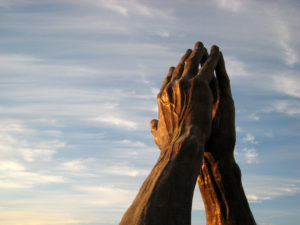
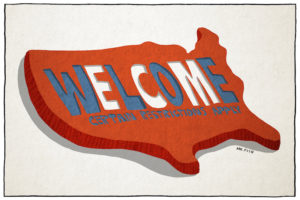
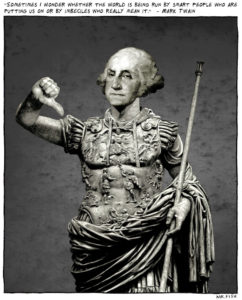
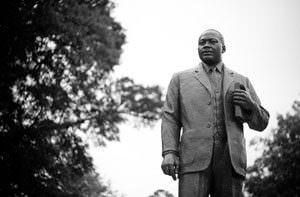
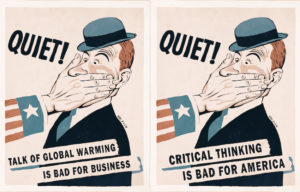
You need to be a supporter to comment.
There are currently no responses to this article.
Be the first to respond.